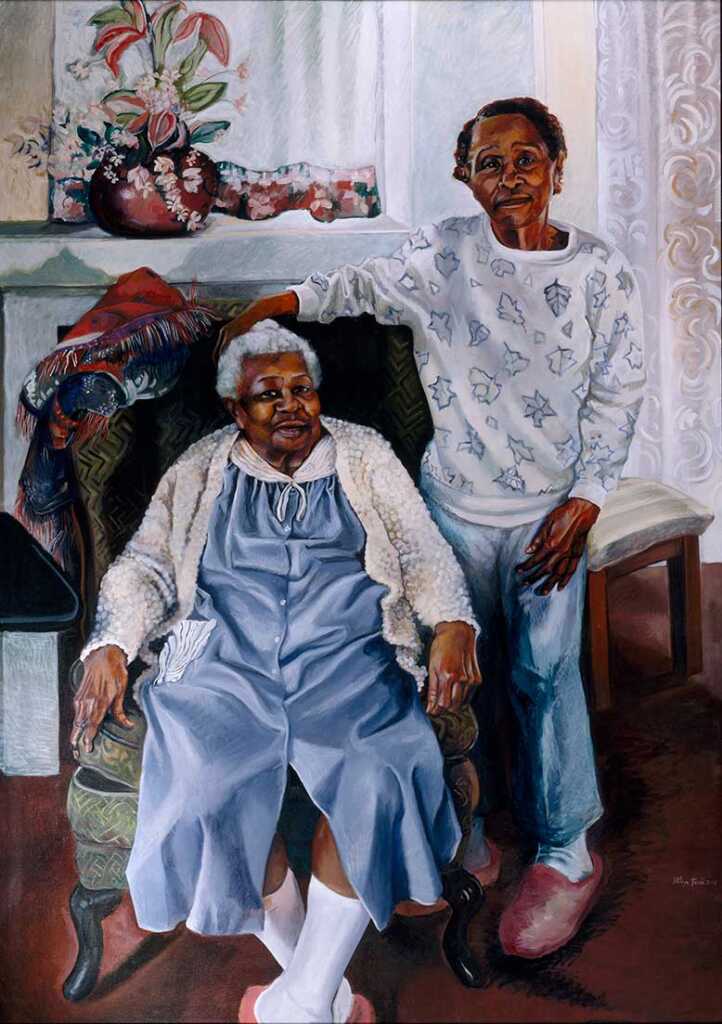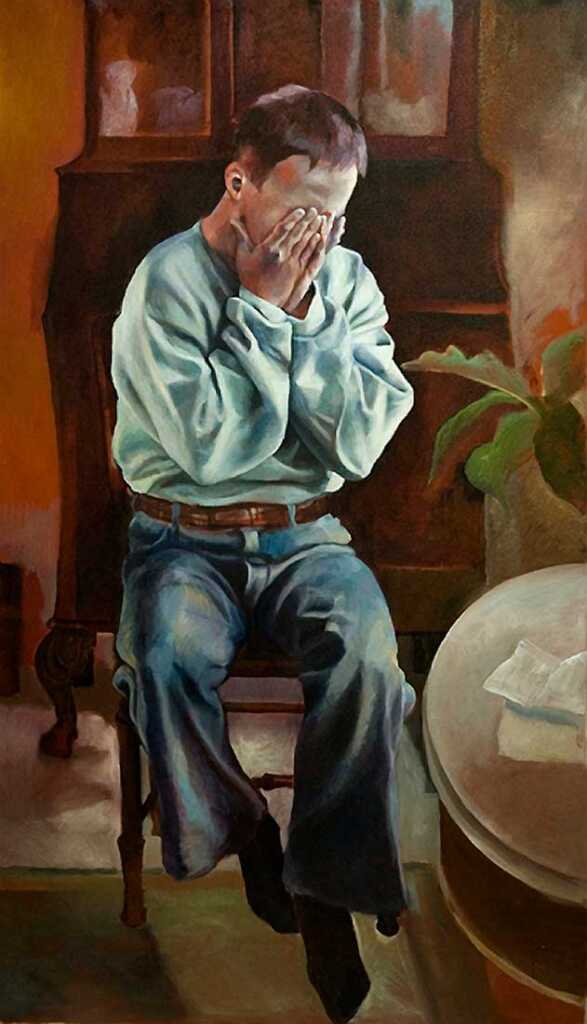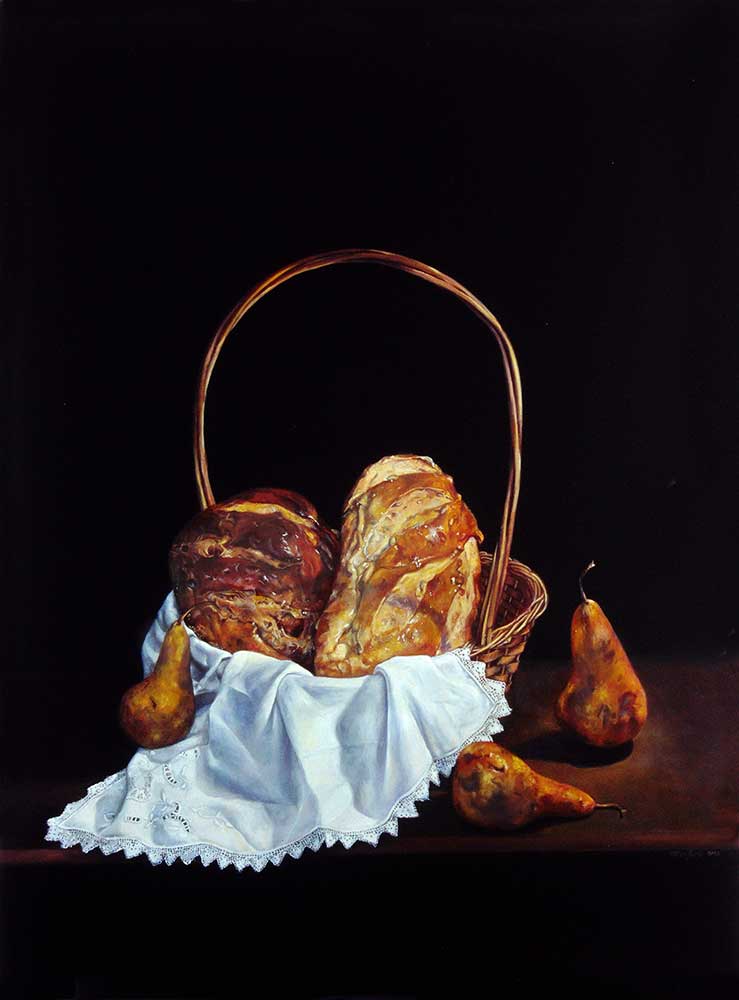An Exclusive Interview With
KATHRYN JACOBI
By Ariel SU.

“Over my life as an artist, I have worked on two simultaneous and occasionally overlapping bodies of work. The first derives from direct observation of the “real” world, as I find it. My primary interest here is portraiture (in the broadest sense), and even my still lifes derive from that exacting scrutiny. Whether working from sittings, objects, or photographs, my aim is fidelity to the specific subject in these representational and more traditional paintings. The second body of work comes from the inside out. It bypasses rational observation, instead being an imagined response to the world as I find it.”
-Kathryn Jacobi

KATHRYN JACOBI
Kathryn Jacobi was born in Manhattan in 1947. She attended U.C.L.A., U.C. Berkeley, and California State University Northridge, where she graduated with B.A. in 1978 and her M.A. in 1980.
Kathryn has spent much of her life in California. She presently lives in Santa Monica, building a new studio attached to her home.
Jacobi is a classically trained, contemporary realist painter, printmaker, and photographer who has worked professionally for over 50 years, exhibiting in galleries and museums throughout the United States, Canada, and Europe; her work has been featured in international publications, including in the Art Market Magazine Issue #49 in 2019.
Her unique triptych, “Sleepwalking Through The Apocalypse,” attempts to merge her art’s traditional and more abstract threads into a melded and original vision. It’s a great pleasure to discuss the creation of this absolutely outstanding artwork, the vision behind and to feature some of her wonderful Still Life works of art.

Oil on canvas. 2012
An Exclusive Interview With
KATHRYN JACOBI
By Ariel SU.
Art Market Magazine: Thank you, Kathryn, for this interview. We are excited to feature your outstanding work in our Gold List Special Edition. Your work is fascinating; a unique combination of high-quality figurative techniques and an abstract line developed differently in each series you make. But before we start exploring your art, let’s talk about what drew you to the art field initially. Did you grow up in an artistic environment?
Kathryn Jacobi: Thank you, It’s a pleasure. My mother, fast approaching her 100th birthday, studied painting for five years at the Art Student’s League in New York City when she was very young.
She worked with renowned artists such as George Bridgeman and George Brackman.
My father was a writer. Some of my earliest memories were of watching my mother paint. My family was always supportive, and I pursued both painting and writing with encouragement on both fronts.
Art Market Magazine:
Where do the inspiration and the ideas come from? What influenced your art?
Do you have notable artists who influenced your artistic style?
Kathryn Jacobi: My own work has had many influences and heroes. Having spent my childhood in a home filled with books, art, music, and museum visits, they have always been important sources of inspiration. I read a great deal, and literature, from classical to contemporary sources, has been critically important to my development. In addition, for many years, I worked as a book illustrator alongside my more personal work.
My father, a German Jew who left Berlin in 1935, brought a love of German Expressionist art, and after serving as a U.S. intelligence officer during World War II, he returned to Germany to retrieve what he could of our family history.
He also brought back lithographs and etchings by Paul Klee, Emil Nolde, Max Lieberman, and others that he traded for cigarettes on the streets of Berlin. But, many artists have moved and influenced me, from Rembrandt, Durer, and the Spanish Masters to the 20th-century artists I love, such as Käthe Kollwitz, Lucien Freud, and Anselm Kiefer, amongst others. There are too many to mention.

Oil on canvas. 102 x 102 cm
Art Market Magazine:
You graduated from the California State University, Northridge, with an M.A. in Art in 1980. Would you say your high figurative technique came from the academic years, or it’s more a gifted natural ability?
Kathryn Jacobi:
While I graduated with a degree in painting and printmaking, I pursued more literature courses than those in studio work. The figurative processes were less learned through school and more through personal study, discovering what and whose art I loved, and trying to understand what moved me strongly, why, and how it was accomplished.
I believe innate talent plays some role, but I have always felt that real learning comes through hard work, continuously painting, and practicing until I understand the structure of what I see.
For instance, I spent an entire year learning to paint hands. For most of my long career, I’ve spent at least one day per week working with a model, or, in the absence of someone willing to sit for me, on still lifes, which I treat with the same respect for accuracy and truth that I attempt with each individual portrait subject. These are hard-won skills that I prized but were not considered especially valuable during all the years when abstract and conceptual art reigned as paramount importance.

Oil on canvas. 213 x 152 cm
Art Market Magazine: In your series of works, ‘ SleepWalking Through the Apocalypse’ presented in a past article in Art Market Magazine Issue #49, We receive a strong expression of isolation from society; the figures are usually sad, expressing profound thoughts, maybe desperation, and always give a sensation of loneliness on the surface, sometimes floating in the darkness. What is the philosophical idea behind your work? Is it an expression of your opinion on the relationship between the individual and society? Does your work express feelings of fear and thoughts of death?
Kathryn Jacobi: In 2019, I had only finished the first two large diptychs of the intended triptych, ‘Sleepwalking Through the Apocalypse.’
Studies for this significant work began shortly after 9/11, and I started working on the finished painting in 2008. While many other pieces were completed during these two decades, work progressed steadily on this painting. The final Diptych, presented here for the first time publicly, took most of the last three years of fairly steady work to finish. I produced an illustrated catalog in 2021 with an essay documenting the process and the ideas behind the triptych, which you can download gratis from my website.
It is my largest-scale work, trying to encapsulate the history of the new millennium, and is, in essence, a sad story;
a history painting through the lens of a dream: my family history, the reality of the holocaust, and the fragility of our planet and our lives contain the impulses I followed working over those many years. As it changed, morphed, and grew, I tried to “cast a cold eye, on life, on death” (W.B. Yeats) without sentimentality or over-reach.

Oil on canvas. 2019
Art Market Magazine:
In your work “Tree” (Oil on canvas. Diptych, 96” 144”. First Page) from 2019, the viewer can feel a strong message of “profound pain” most of the figures are featured as a collage, revealing only their faces, and hands asking for help.
On the other hand, we see the tree’s growth and the woman figure as the powerful and dominant one. How would you describe the feminine figures and symbolism in your art?
Kathryn Jacobi: The “Tree” center diptych represents an inverted or negative version of the “Tree of Life.” It is an abstraction of the profound fear we all share of the world in chaos, as it has seemed for a long time, but this work remains a reaction to 9/11. As a citizen of the United States and, more broadly, of the world, it felt as if this jarring event catalyzed and formed the underpinnings of our political and emotional understanding of the world. The figures of the women in the upper half of the tree are a beautiful young dancer, filled with life, who is transfiguring into the upper branches, turning gray and losing her human coloration; in other words, the “Tree of Life” is dying. The lower half is a metaphoric version of hell.

Oil on canvas. 274 x 152 cm

Oil on canvas on wood. 152 x 76 cm
Art Market Magazine: What reaction would you like the viewer to have while looking at your work? What thoughts do you want it to raise?
Kathryn Jacobi: I hope the viewer will be moved and compelled to think of our current historical path and conceivably how to change that trajectory.

Oil on canvas. 102 x 76 cm
Art Market Magazine:
Let’s talk about the process of creating your art.
Can you describe the workflow? For example, do you make small sketches as a preparation for large-scale artwork?
Kathryn Jacobi: Many studies preceded this painting.
Usually, I work on many versions, trying to excavate each image to learn what it means to me. I do not start with more than a vague idea, but through the long process of the work itself, the ideas become increasingly clear to me.
I worked for about seven years on many different approaches, and even after putting together a large maquette of studies (please visit my website to see some of them!), the painting became entirely different from my initial explorations.
Art Market Magazine: How did the global pandemic and the lockdowns affect your work? Did you find this period artistically challenging?
Kathryn Jacobi: The lockdowns, especially for the first year, were actually very productive for me.
I could work without interruption for long days, listen to music or books, and take a walk when I needed a break.

Oil on panel. 102 x 76 cm

Oil on panel. 122 x 76 cm
Art Market Magazine:
What does the future bring? What are your wishes for the months to come?
Kathryn Jacobi: Eventually, my dearest hope is that the triptych will find a permanent exhibition at a venue where many people can see it and hopefully create an effect to change the direction of our public, moral, and political futures. Beyond that desire is that the viewers will be personally moved and, as I was, motivated to make our world a safer and kinder abode.

